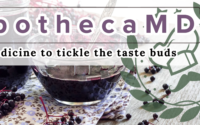The Role of Polyphenolic Antioxidants from Tea and Rosemary in the Hydroxyl Radical Oxidation of N-Acetyl Alanine
Molecules. 2023 Nov 10;28(22):7514. doi: 10.3390/molecules28227514.
ABSTRACT
In dead biological tissues such as human hair, the ability of antioxidants to minimise autoxidation is determined by their chemical reactions with reactive oxygen species. In order to improve our understanding of factors determining such antioxidant properties, the mechanistic chemistry of four phenolic antioxidants found in tea and rosemary extracts (epicatechin, epigallocatechin gallate, rosmarinic and carnosic acids) has been investigated. The degradation of N-acetyl alanine by photochemically generated hydroxyl radicals was used as a model system. A relatively high concentration of the antioxidants (0.1 equivalent with respect to the substrate) tested the ability of the antioxidants to intercept both initiating hydroxyl radicals (preventive action) and propagating peroxyl radicals (chain-breaking action). LC-MS data showed the formation of hydroxylated derivatives, quinones and hydroperoxides of the antioxidants. The structure of the assignment was aided by deuterium exchange experiments. Tea polyphenolics (epicatechin and epigallocatechin gallate) outperformed the rosemary compounds in preventing substrate degradation and were particularly effective in capturing the initiating radicals. Carnosic acid was suggested to act mostly as a chain-breaking antioxidant. All of the antioxidants except for rosmarinic acid generated hydroperoxides which was tentatively ascribed to the insufficient lability of the benzylic C-H bond of rosmarinic acid.
PMID:38005236 | PMC:PMC10673243 | DOI:10.3390/molecules28227514

